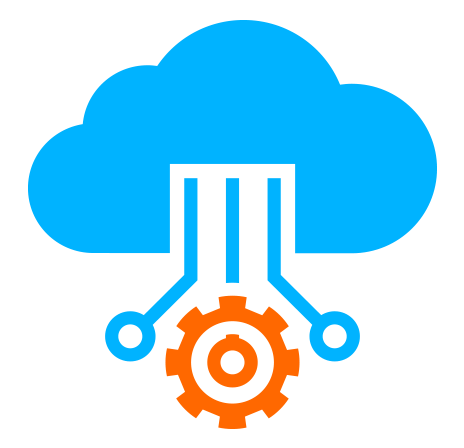 Server
Colocation
Server
Colocation
 CDN
Network
CDN
Network
 Linux Cloud
Hosting
Linux Cloud
Hosting
 VMware Public
Cloud
VMware Public
Cloud
 Multi-Cloud
Hosting
Multi-Cloud
Hosting
 Cloud
Server Hosting
Cloud
Server Hosting
 Kubernetes
Kubernetes
 API Gateway
API Gateway

In today’s AI-first economy, where even milliseconds of prediction time can influence customer decisions, the pressure to deliver faster, smarter, and more accurate results is stronger than ever. According to a 2024 Gartner report, nearly 80% of organizations implementing AI models have shifted focus from building models from scratch to fine-tuning pre-trained ones—and the reasons are compelling. From cost savings to performance upgrades, fine-tuning has become the gold standard for AI optimization.
But what exactly is fine-tuning? Why is it more popular than training from the ground up? And how does it drastically improve AI model performance—especially when deployed through cloud platforms like Cyfuture Cloud?
In this knowledge base, we’ll explore the transformative power of fine-tuning, demystify how it works, and show you where and when to use it to enhance your AI strategy.
Let’s keep it simple—fine-tuning is the process of taking a pre-trained AI model and training it further on a specific dataset to make it more relevant to a particular task or domain. Instead of starting from zero (like traditional model training), fine-tuning leverages the “knowledge” the model has already acquired and sharpens it for specialized tasks.
Think of it like this: if a pre-trained model is a college graduate with a degree in communication, fine-tuning helps that graduate become a brand strategist in the fashion industry.
This process saves:
Time (because the base layers of intelligence already exist),
Compute power (especially when using cloud GPU infrastructure),
Cost (since training large models from scratch can run into thousands of dollars)
In real-world AI pipelines—especially in industries like healthcare, finance, and customer service—fine-tuning is what bridges the gap between general capability and real-world performance.
Now let’s talk about the impact. A generic AI model might have been trained on a vast dataset like Wikipedia, Common Crawl, or ImageNet. While that’s great for general language understanding or image recognition, it doesn’t help much if your app needs to detect rare skin diseases or understand financial documents written in industry-specific jargon.
Here’s how fine-tuning makes the difference:
When a model is fine-tuned on data specific to your industry or task (say, chat support for a telecom company), it adapts its outputs to fit that context. That means fewer hallucinations, more relevant answers, and better overall customer experiences.
Fine-tuning helps models learn the nuances of your data, reducing irrelevant or incorrect results. For instance, a fine-tuned model in legal document classification will be much better at telling contracts apart than a generic one.
With fine-tuning, you don’t need to blow your budget on building and training massive models from scratch. You tweak what already exists—which is faster and more scalable, especially on cloud-based platforms like Cyfuture Cloud.
A fine-tuned model deployed via cloud inference servers can deliver low-latency predictions because it’s been trimmed, optimized, and calibrated specifically for your use case. This is essential in real-time environments like fraud detection or autonomous navigation.
Fine-tuning might sound complex, but the process can be broken down into a few digestible steps:
Start with a model that suits your task type—language (e.g., BERT, GPT), image (e.g., ResNet), or audio (e.g., Whisper). Open-source libraries like Hugging Face and TensorFlow Hub offer thousands of pre-trained options.
This is where the magic begins. Your dataset should reflect the specific type of input your model will encounter in the real world. For instance, if you’re building a financial Q&A system, your dataset should include real transaction data, financial reports, or customer queries.
Only certain layers of the model (typically the top layers) are retrained. The base model retains its general knowledge, while your task-specific layers get updated through backpropagation.
Once fine-tuned, test the model’s accuracy, precision, recall, and latency. Platforms like Cyfuture Cloud offer real-time benchmarking and performance dashboards to fine-tune performance continuously.
Finally, host your model using cloud inference services that provide scalable infrastructure, API endpoints, and support for real-time requests. This is where Cyfuture Cloud comes in—with GPU-backed servers and AI-ready environments that make deployment seamless.
If you're considering where to do your fine-tuning—in the cloud or on-premise—here’s a simple breakdown:
|
Criteria |
Fine-Tuning on Cloud (e.g., Cyfuture Cloud) |
Fine-Tuning on Local Servers |
|
Compute Resources |
High (scalable GPUs, TPUs) |
Limited by local hardware |
|
Flexibility |
Dynamic environments and pay-as-you-go options |
Static, requires hardware purchase |
|
Setup Time |
Minutes (pre-installed AI frameworks) |
Days to weeks for setup and compatibility |
|
Scalability |
Auto-scaling with traffic |
Manual upgrade and resource allocation |
|
Cost Efficiency |
No upfront cost; pay for use |
High upfront cost and maintenance |
|
Maintenance |
Managed by provider |
Handled by internal IT team |
With Cyfuture Cloud, fine-tuning is simplified. You get access to powerful servers, pre-configured environments for PyTorch and TensorFlow, and easy API integration for inference.
A generic image classification model, when fine-tuned with X-ray or CT scan datasets, can detect rare diseases more accurately and faster.
Instead of building bots from scratch, companies fine-tune large language models to understand their tone, policies, and FAQs. The result? Higher first-call resolution and lower support costs.
Generic language models often fail to understand financial nuances. Fine-tuning helps interpret income statements, balance sheets, or regulatory filings with precision.
By fine-tuning models with sensor data, manufacturers can predict equipment failures, optimize energy use, and improve supply chain operations—all in real-time using cloud inference.
Choosing a cloud platform to support your fine-tuning process is just as important as the model itself. Cyfuture Cloud stands out by offering:
High-performance GPU servers tailored for AI workloads
Containerized environments to deploy fine-tuned models easily
Auto-scaling AI inference APIs for real-time integration
Affordable pricing models for startups, SMBs, and enterprises
24/7 support with dedicated AI specialists
Whether you're building your first AI prototype or deploying a large-scale production pipeline, Cyfuture Cloud offers the compute muscle and flexibility to make it happen.
In a world flooded with data, AI models that stay generic will fall behind. What wins is context-aware intelligence—the ability to understand and respond with domain-specific precision. And fine-tuning is the secret sauce that powers that shift.
When you combine fine-tuned models with cloud-native infrastructure, you unlock a future where AI is not only fast and scalable but also deeply aligned with your business goals.
So whether you're a CTO trying to accelerate your AI roadmap, or a data scientist looking to squeeze every bit of performance out of your models—fine-tuning is your competitive edge. And platforms like Cyfuture Cloud are the launchpads you need to deploy smarter, sharper AI.

Let’s talk about the future, and make it happen!
By continuing to use and navigate this website, you are agreeing to the use of cookies.
Find out more


